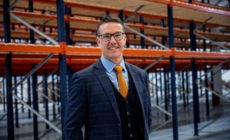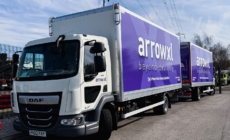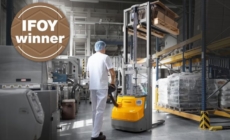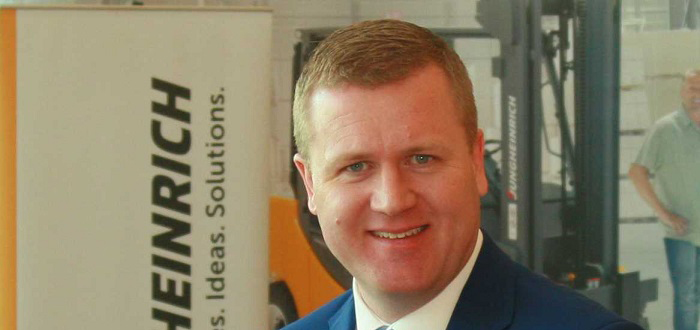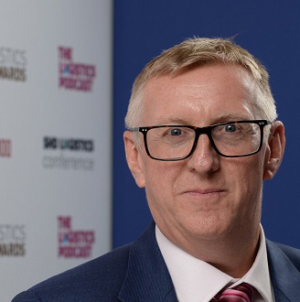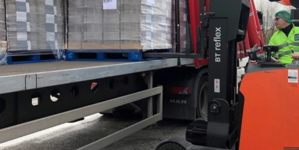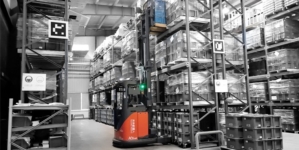-
ROSSLARE EUROPORT TARGETS HEALTH & SAFETY WITH CAMERA TELEMATICS PARTNERSHIP - 2 days ago
-
Landmark Study Reveals Wearable Robotics Significantly Boost Safety and Efficiency in Industrial Environments - July 24, 2024
-
Visku Tackle The Retail Seasonality Challenge One Pallet At A Time - July 22, 2024
-
KAMMAC AND BERGEN LOGISTICS STRENGTHEN FASHION & LIFESTYLE SERVICES IN THE UK - July 19, 2024
-
TENTBOX EXTENDS PARTNERSHIP WITH ARROWXL TO SUPPORT INCREASING DEMAND - July 17, 2024
-
The Perfume Shop improves customer journeys while driving profitability in partnership with Scurri - July 17, 2024
-
ZEROMISSION SECURES £2.3M ($3M) INVESTMENT TO ACCELERATE ELECTRIC FLEETS - July 16, 2024
-
BCMPA CELEBRATES SUCCESS OF 2024 CONFERENCE - July 15, 2024
-
Best of the Best: Jungheinrich Celebrates Triple International Award Win - July 12, 2024
-
GOPLASTICPALLETS.COM CALLS ON NEW CHANCELLOR RACHEL REEVES TO CONSIDER PLASTIC PACKAGING TAX REFORM - July 10, 2024
The Connected Engineer.
The quality of customer service increasingly informs an organisation’s perception of a business relationship – yet despite huge changes to manufacturing and logistics processes over the past decade, there has been little innovation in logistics and material handling customer service in response.
In a fiercely competitive market, the inevitable consequence of a lack of differentiation is a race to the bottom on price – at a time when customers are actually looking for more, not less. Customers want better uptime, easier ways to log calls and, critically, performance data that is automatically provided to key compliance and operations systems. Engineers are not just delivering customer service; they are supporting equipment that is embedded within vital intralogistics processes.
Logistics and materials handling equipment suppliers must evolve their business model to one that not only acknowledges the changing customer demand being driven by the digital age, but leads it. Steve Shakespeare, Director – Customer Service, Jungheinrich UK, explains how in this new digital age, the connected customer service engineer will play a vital role in utilising technology to move the industry forward and add real value to the customer interaction.
Trusted Advisors
In today’s tightly integrated, 24×7 intralogistics marketplace, the performance of every piece of equipment is under increasing scrutiny. With organisations operating to ever more stringent Service Level Agreements (SLA) driven by the end consumer’s rising expectations, the cost of downtime or operational inefficiency continues to rise. As such, the role of the customer service engineer, has never been more important – but are materials handling vendors really stepping up to the new challenge?
Organisations rely heavily on these trusted advisors, recognising the value of deep expertise and product experience. Over the last few years, many vendors have empowered engineers with software that provides direct access to a raft of information, from customer history and product specs, to the ability to search for and order the required spare parts.
However, the speed with which the market is changing is creating a strong demand for greater innovation; for a world that embraces automation and enhanced information resources to deliver a truly joined up customer service.
Wired for Speed
In a world increasingly driven by the Internet of Things (IoT) and machine learning, the idea of logging a support call via telephone or email appears increasingly outdated. It is surely far more efficient to download a customer service app, and log a call by scanning a truck’s Quick Response (QR) code. Providing engineers with apps also speeds up the process – providing immediate visibility of the next job plus the ability to click through to Google maps and directions to the customer site. Such tools will be key to connecting engineers to customers to provide ever faster and more efficient response.
A truly connected engineer will no longer require a separate device, such as a laptop, to locate customer and product information but will have information automatically pushed to him via augmented reality. Virtual glasses, for example, will automatically read the truck’s QR code and immediately provide all the required information in the engineer’s eyeline – from product manual to parts codes. This is a huge step forward that will improve the speed of resolution and hence product uptime.
Of course, a key aspect of this process is the speed with which spare parts can be attained. Again, combining UK based parts inventory with slick logistics processes will be key to backing up the high- quality experience provided by the engineers.
Embedded Partners
The ability to harness innovative technology will also become ever more important in embracing the joined up, information-led approach to service required to support today’s 24×7 intralogistics models. With the adoption of the IoT increasingly enabling every aspect of the supply chain to be recorded, analysed and adjusted in real-time, the onus is on equipment vendors to feed vital data into their customers’ operational systems.
Equipment telemetry, for example, is already transforming predictive maintenance schedules. Providing engineers with the relevant fault code as part of the job notification will enable any relevant spare parts to be identified and ordered before even visiting the site – further improving the quality of service and uptime.
In addition to meeting expectations of faster response, repair and turnaround times, a connected engineer will be able to record and feed data direct to customers’ systems, supporting both compliance requirements and the proactive management of warehouse operations. The engineer is not only connected but embedded, providing an integral component of organisation’s operations.
Building Expertise
People are at the heart of any customer service model – and it is essential to continue to build expertise. While this industry benefits from a strong pool of highly experienced individuals with long service records, there is also an acknowledged challenge in recruiting younger individuals. In a market with record employment and a diversity of choice, the latest generation of potential recruits – Generation Z – have different requirements. These digital natives have high expectations and any company without innovative technology solutions risks employees becoming rapidly disengaged.
Therefore, in addition to strong apprenticeship programme and excellent training, state of the art technology is key to attracting the next generation – a potential apprentice will see the appeal of working with augmented reality, for example. A strong pool of customer service engineers who combine longevity and experience with the excitement and desire to innovate, with new, technology-first recruits empowered by connected technology, will be perfectly placed to support customer demand for business agility, change and innovation.
The onus is on materials handling and logistics vendors to step up and meet the challenges faced throughout the manufacturing, distribution and retail sectors. As customer businesses embrace technology to achieve unprecedented levels of efficiency, productivity and control, it is this joined-up, information driven approach to service that will become increasingly essential.
Customer service engineers have always been an essential component of the end to end relationship – but the connected engineer is now fundamental to ensuring organisations’ fast evolving business needs can be achieved.





